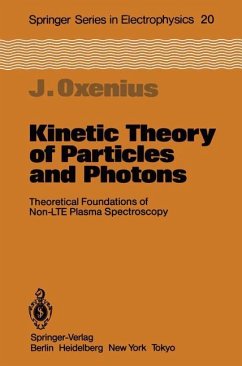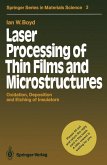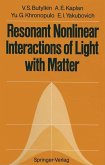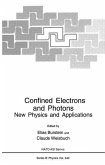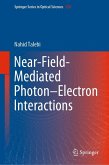Many laboratory and astrophysical plasmas show deviations from local ther modynamic equilibrium (LTE). This monograph develops non-LTE plasma spectroscopy as a kinetic theory of particles and photons, considering the radiation field as a photon gas whose distribution function (the radiation in tensity) obeys a kinetic equation (the radiative transfer equation), just as the distribution functions of particles obey kinetic equations. Such a unified ap proach provides clear insight into the physics of non-LTE plasmas. Chapter 1 treats the principle of detailed balance, of central importance for understanding the non-LTE effects in plasmas. Chapters 2, 3 deal with kinetic equations of particles and photons, respectively, followed by a chapter on the fluid description of gases with radiative interactions. Chapter 5 is devoted to the H theorem, and closes the more general first part of the book. The last two chapters deal with more specific topics. After briefly discuss ing optically thin plasmas, Chap. 6 treats non-LTE line transfer by two-level atoms, the line profile coefficients of three-level atoms, and non-Maxwellian electron distribution functions. Chapter 7 discusses topics where momentum exchange between matter and radiation is crucial: the approach to thermal equilibrium through interaction with blackbody radiation, radiative forces, and Compton scattering. A number of appendices have been added to make the book self-contained and to treat more special questions. In particular, Appendix B contains an in troductory discussion of atomic line profile coefficients.
Hinweis: Dieser Artikel kann nur an eine deutsche Lieferadresse ausgeliefert werden.
Hinweis: Dieser Artikel kann nur an eine deutsche Lieferadresse ausgeliefert werden.

